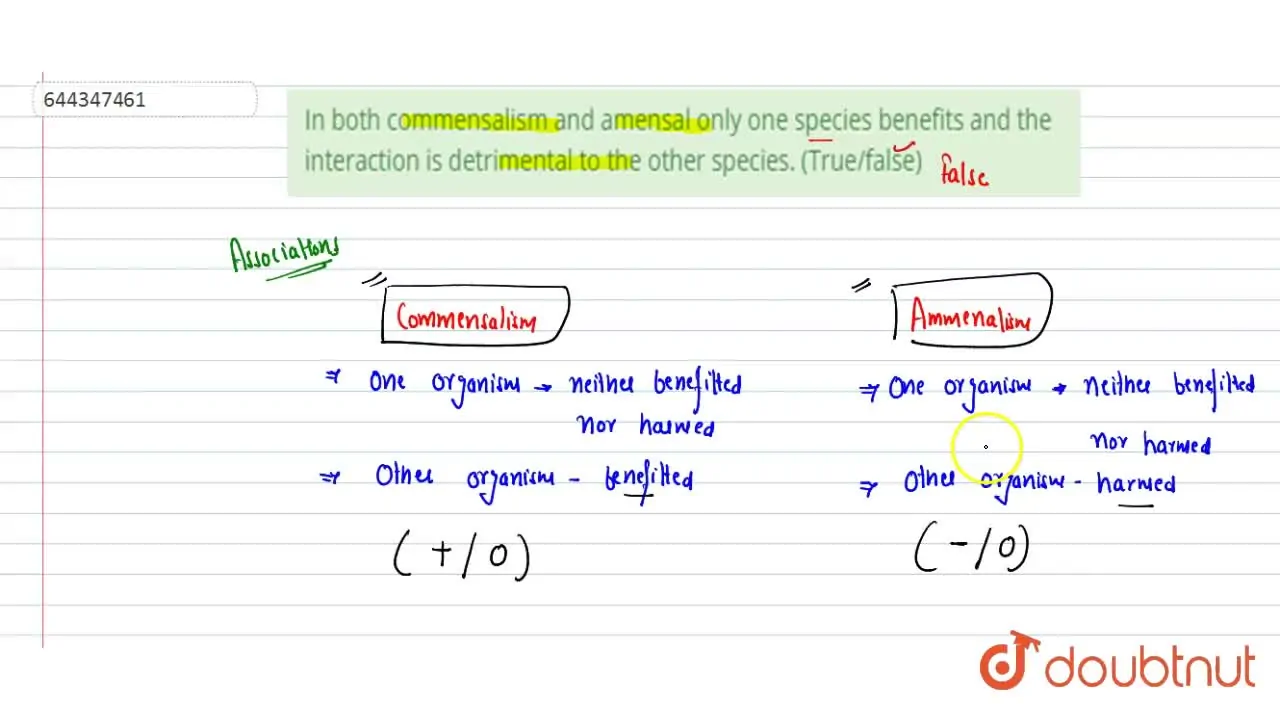In both commensalism and amensal only one species benefits and the interaction is detrimental to the other species. (True/false)
Step by step video & image solution for In both commensalism and amensal only one species benefits and the interaction is detrimental to the other species. (True/false) by Biology experts to help you in doubts & scoring excellent marks in Class 12 exams.
Related Playlists
- BOOK - AAKASH INSTITUTE ENGLISHCHAPTER - ORGANISMS AND POPULATIONS EXERCISE - EXERCISE30videos
ORGANISMS AND POPULATIONS
- BOOK - AAKASH INSTITUTE ENGLISHCHAPTER - ORGANISMS AND POPULATIONS EXERCISE - ASSIGNMENT (SECTION-A) (Objective Type Questions)35videos
ORGANISMS AND POPULATIONS
- BOOK - AAKASH INSTITUTE ENGLISHCHAPTER - ORGANISMS AND POPULATIONS EXERCISE - ASSIGNMENT (SECTION-D) (Assertion-Reason Type Questions)15videos
ORGANISMS AND POPULATIONS
- BOOK - AAKASH INSTITUTE ENGLISHCHAPTER - NEURAL CONTROL AND COORDINATION EXERCISE - Assignment SECTION - D (Assertion-Reason Type Questions )10videos
NEURAL CONTROL AND COORDINATION
- BOOK - AAKASH INSTITUTE ENGLISHCHAPTER - PHOTOSYNTHESIS IN HIGHER PLANTS EXERCISE - Assignment(section D)10videos
PHOTOSYNTHESIS IN HIGHER PLANTS
Similar Questions
The interaction where only one species is benefitted and detrimental to the other species is
View SolutionTrue species are
View SolutionThe interaction in which both species are harmed is
View SolutionIn which of the following interaction is detrimental to both the partners in relationship ?
View SolutionWhat is the interaction between two species called?
View SolutionThe interaction where one species is benefitted and the other is neither benefitted nor harmed is
View SolutionThe interaction in which both species are benefitted is termed.
View SolutionAmensalism is an association between two species where
View SolutionAmensalism is an association between two species where
View SolutionAmensalism is an association between two species where
View Solution


